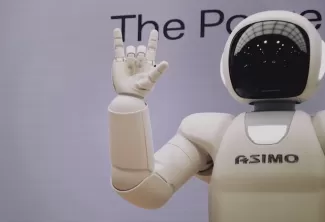Artificial intelligence (AI) has become a powerful tool for businesses to improve customer engagement and drive growth. One of the most popular applications of AI is in building websites that can understand and respond to user needs in a more human-like way. In this blog post, we'll take a closer look at some of the technologies that are used behind AI-powered websites, and how they work.
- Machine Learning: Machine learning (ML) is a method of teaching a computer to learn from data, without being explicitly programmed. It is used in AI-powered websites to analyze data, make predictions, or perform other tasks. For example, an e-commerce website might use ML to recommend products to customers based on their browsing history. ML algorithms, such as decision trees, random forests, and neural networks, are used to analyze data, learn from it, and make predictions.
- Natural Language Processing (NLP): NLP is a field of AI that focuses on the interaction between computers and human language. NLP is often used in AI-powered websites for tasks such as text analysis, sentiment analysis, and language translation. For example, a chatbot on a website might use NLP to understand and respond to customer queries in natural language.
- Computer Vision: Computer vision is a field of AI that focuses on the analysis and understanding of images and videos. Computer vision is often used in AI-powered websites for tasks such as image recognition, object detection, and facial recognition. For example, an AI-powered website might use computer vision to identify and tag images of products, or to analyze images to determine the age and gender of website visitors.
- Deep Learning: Deep learning is a subfield of machine learning that uses neural networks with multiple layers to analyze data. Deep learning is often used in AI-powered websites for tasks such as image and speech recognition. For example, an AI-powered website might use deep learning to transcribe audio recordings or to identify objects in an image.
- APIs: AI-powered websites often use Application Programming Interfaces (APIs) to access the functionality of other services, such as Google Translate or IBM Watson, to provide the services in the website. For example, a website might use an API to access a natural language processing service to understand and respond to customer queries in a more human-like way.
- Cloud computing: Many AI-powered websites use cloud-based services to provide the computational power needed to train and run their models. These cloud-based services offer the ability to scale up or down depending on the website's needs, which can help to keep costs under control.
- Web development technologies: Front-end technologies like HTML, CSS, and JavaScript, and back-end technologies like Node.js, Python, Java, Ruby on Rails, PHP, etc. are used to build the website and make the AI functionality accessible to users. For example, a website might use JavaScript to create an interactive user interface that allows customers to interact with a chatbot in a natural language.
In conclusion, AI-powered websites use a combination of technologies to provide their functionality. These technologies include machine learning, natural language processing, computer vision, deep learning, APIs, cloud computing, and web development technologies. By understanding how these technologies work, businesses can use them to build more intelligent, user-friendly websites that can drive growth and improve customer engagement.


Comments